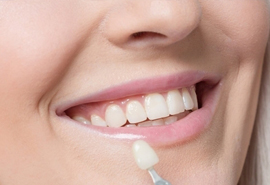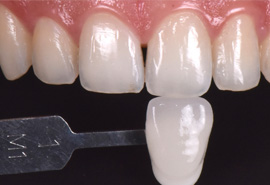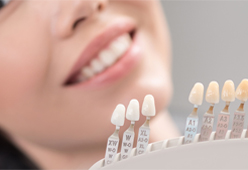
Dental veneers are an appendage to the natural, by and large healthy teeth, in a form of thin plates or flakes that are placed on the front side of the teeth in order to improve teeth’s appearance, and, to a degree, their function. Veneers emerged in the early days of Hollywood as a method actors used to perk up their looks, and, beginning in the 1990s, with the advent of durable composite materials, veneers have become a popular choice for getting rid of different dental imperfections.

The materials used to fabricate veneers are composite and ceramic. Composite veneers are esthetically inferior to ceramic veneers, they require more frequent corrections, and are not as long-lasting, but their strong point lies in the fact that they are much easier and far cheaper to fabricate compared to ceramic veneers. On the other hand, ceramic veneers are a perfect solution in every respect if you wish to recreate the natural look of your teeth, and only if, of course, the dentist has given their consent as well.

Placement of veneers is largely similar to placement of crowns onto healthy teeth. First, a model of the tooth is made by way of impression or a 3D scan, then, the teeth are recontoured, normally not deeper than 0.3 mm per tooth and then a patient gets temporary veneers until permanent ones are fabricated. In case of no-prep veneers or composite veneers, there is no interim period requiring temporary veneers, but the patient gets the final veneers straight away if they are composite, or goes home after taking impressions and then comes for the placement of no-prep veneers once they are done. Veneers are cemented onto teeth (or are applied in layers if composite) and a patient can have fully functioning teeth practically straight after the placement.
Is it possible to have only a couple of veneers on front teeth?
We can place a veneer on only one tooth, but although you may adjust the colour shade to reflect the neighbouring natural teeth, dentists advise and patients usually opt to place the same number of veneers on both jaws.